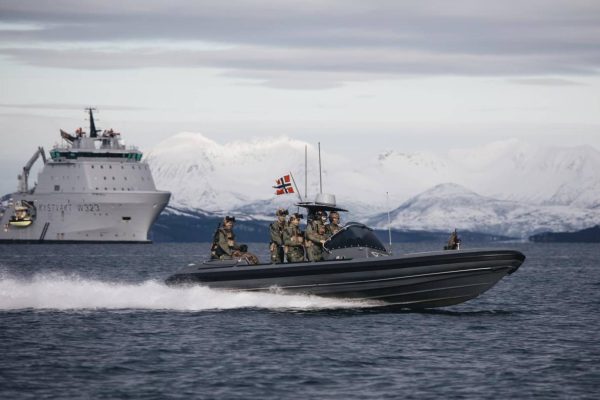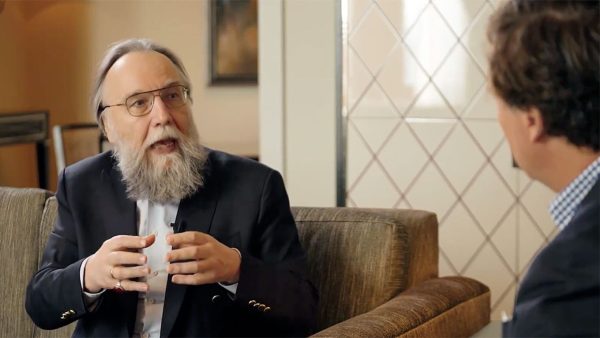Sweden is signaling seriousness about its defense. On September 11, Defense Minister Pål Jonson announced that next year the government will increase the defense budget by a whopping 28% — which also means that Sweden will reach NATO’s defense spending target of 2% of GDP. The new funds increase the budget to SEK 120bn (about $11bn), double the figure in 2020.
This is not the first defense budget increase in recent years. But the size of this year’s rise, along with the government’s clear message about how it intends to invest the money, illustrates the importance of showing commitment to national defense rather than treating it as an irritation.
The new money will be invested in a range of systems including artillery, transport aircraft, new warships and Blekinge-class diesel submarines, JAS Gripen 39E combat aircraft, and — along with other NATO allies — a renewed focus on materiel maintenance and ammunition stocks. Numbers of defense personnel will rise and the garrison on the Baltic island of Gotland is being restored to credible deterrence levels.
When I was visiting my parents the other day, I woke up at the crack of dawn to the sounds of shots being fired in the distance. “The soldiers are back,” my father said. They certainly were. Just as when I was growing up, troops were conducting early-morning exercises at the nearby firing range. Indeed, these days one sees them and their vehicles around the area a lot. (During the Cold War, this military activity also attracted Warsaw Pact espionage agents so unsubtle that even we locals could detect them.)
The Cold War was exceptionally dangerous, and behind the Iron Curtain and in many other places it was brutal and unjust. But during that era, countries also took their national defense seriously — and in Sweden doing so involved not just large armed forces and conscription for all men, but also a total defense system so all-encompassing and so well-planned and well-managed that it remains the global benchmark.
It was not to last. Starting in the 1990s, governments of both the left and the right took to slashing both the military and the civilian elements of Swedish defense. In the past decade, then-Defense Minister Peter Hultqvist did his best to shore up the armed forces, but he served in a government that only managed to muster lukewarm support for national security. As late as 2017 and 2018, defense expenditures remained a modest 1% of GDP, only slowly rising to 1.1%, 1.2% and 1.3%.
To be sure, the government has many other responsibilities to attend to, including education, healthcare, social care, and infrastructure. But those serving with Hultqvist in governments that comprised either Social Democrats or Social Democrats and Greens were just not that interested in national security, not even after Vladimir Putin had begun showing his teeth. And truth be told, in matters of national security the center-right government in power until 2014 was just as lackluster. In each case, the government had to be pushed to demonstrate a commitment to the issue, and even then it did so reluctantly. One defense minister resigned in protest. Morale in the armed forces slumped.
Now, finally, after less than a year in power, the current government is demonstrating that it’s serious about the issue.
“Sweden finds itself in the most serious security situation since the end of the Second World War, which requires Sweden to have a defense that is ready to protect Swedish territory,” Jonson explained when announcing the budget increase. (Because this is a minority government, key policies like this are negotiated and agreed on with the Sweden Democrats.)
Jonson said that the increase was made necessary by Sweden’s expected NATO membership, by the need for the country to boost its own total defense capabilities, and to facilitate its increased military support to Ukraine.
It’s a powerful message from a country that — due to the byzantine games of President Recep Tayyip Erdoğan of Turkey — is still waiting to be admitted to NATO. Indeed, it’s a sign that once Sweden joins NATO it intends not just to benefit from the alliance’s collective security but to contribute as well.
And Sweden’s commitment to continued support of Ukraine is heartening. While there’s nothing cheerful about arms deliveries, it is undeniable that Ukraine needs more weapons, now and for many months to come. Countries that selflessly sacrifice weaponry and government funds to help the Ukrainians deserve praise (looking particularly at you, Estonia, Latvia, Lithuania, and Poland).
And under Prime Minister Ulf Kristersson’s government, Sweden has become a staunch supporter. Last month, for example, it announced a SEK 3.4bn ($310m) military aid package to Ukraine on top of the SEK 17bn the country has already given, and agreed to jointly produce the CV90 infantry vehicle in Ukraine. Now it has committed to doing even more.
In an ideal world, money for arms and soldiers would not be necessary. But in the broken world we inhabit, investing in national security is once again indispensable. As I write this, Putin and Kim Jung Un are meeting at a Russian spaceport; an encounter that seems to have resulted in Russia providing North Korea with satellite technology in exchange for artillery ammunition to boost its dwindling stocks. Iran is already providing Russia with weaponry for the war in Ukraine, and China is sending dual-use technology.
A 28% rise in Swedish defense spending is clearly no match for whatever Russia and China might cook up. But what matters just as much as money is a country’s willingness to do its best to keep itself and its friends safe. And if a government doesn’t signal that it’s willing to do its part, why should the citizens do theirs?
As Ukraine has demonstrated, the will to defend is crucial even when an adversary has supposedly superior armed forces.
Elisabeth Braw is a senior fellow at the American Enterprise Institute (AEI), where she focuses on defense against emerging national security challenges. She is also a columnist for Foreign Policy and Politico Europe and the author of ‘The Defender’s Dilemma: Identifying and Deterring Gray-Zone Aggression’ (AEI Press, 2022) and ‘God’s Spies’ (Eerdmans, 2019), about the Stasi.
Europe’s Edge is CEPA’s online journal covering critical topics on the foreign policy docket across Europe and North America. All opinions are those of the author and do not necessarily represent the position or views of the institutions they represent or the Center for European Policy Analysis.





